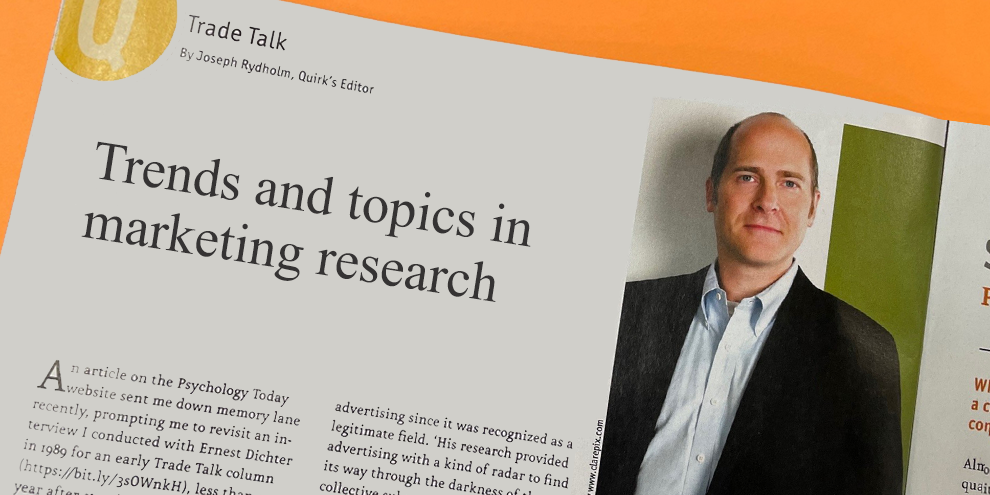One of the panels we have scheduled for the 2016 Quirk’s Event in Brooklyn in February will focus on business-to-business research. We’re still working to narrow down the specifics, so if you have ideas for topics you’d like to have us address, please send me a note. (And if you are a client-side B2B researcher who’d like to be considered as a panelist, contact me for that as well!)
We felt like B2B research was a worthwhile subject to explore because that part of the MR industry tends to take a back seat to the B2C part, at least in terms of airtime at conferences and gatherings. And further, while researchers in both camps use many of the same techniques and are seeking answers to the same kinds of marketing questions, there are crucial differences between B2B and B2C research that sometimes get glossed over.
Some of them were addressed in a recent article, “Service failures have harsh consequences for B2B companies,” by Gallup researchers Daniela Yu and Julie Lamski. (You can find the full article online at http://bit.ly/1jcRcEy.) While both B2B and B2C researchers focus heavily on customer-related research, a B2B customer is typically a different animal than a B2C customer and the stakes for B2B firms can be exponentially higher when problems occur, the authors note:
[W]hen a customer encounters a problem in the B2C world, he may become disengaged and stop buying from that company. If that happens, the company will lose just one of its thousands or millions of customers; for a retail bank, it might be a savings account worth $5,000. But for a B2B supplier, losing one customer can result in a significant loss of income. In the case of a professional services company, a frustrated customer could take away a contract worth millions of dollars.
Gallup urges companies to see problems as opportunities to deepen customer engagement, with the thought that effective and creative handling and resolution of problems can strengthen the bond between company and customer. The company can show the customer it cares about the relationship and also learn more about the customer’s needs, problems and issues.
Further, the B2B buying process is almost always complex. While there may be a single point of contact within the customer’s firm who makes a purchase, that person may have gatekeeper after gatekeeper to obtain final approval from and/or manage the needs and expectations of and any breakdown in this chain of influence can sabotage the sales process.
[P]roblems may stem from a lack of communication, misunderstandings or conflicting messages between the supplier and the members of the company’s buying center, or among buying center members themselves. Because of this, suppliers should build strong relationships to facilitate timely and accurate communication. When product, service or communication failures occur, suppliers can draw on these partnerships when discussing and negotiating how to solve these problems.
Problem resolution is a team effort and the authors extol the value of rewarding and empowering employees for identifying and helping solve customer problems but Gallup also urges senior leaders to step to the fore when the time is right.
Never underestimate the positive influence a senior leader’s proactive and sincere apology can have. Senior leaders also need to “walk the walk” if they want to inspire all employees to maintain a focus on customers and go above and beyond to solve problems. Finally, senior leaders’ sponsorship and empowerment of the account team is vital to ensuring customer engagement during service recovery – no matter how capable the account team is.
